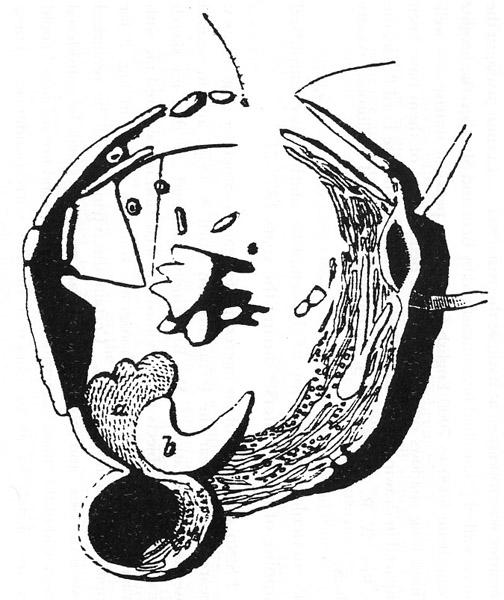
drawing of Gassendi (south up) by John Birmingham, published in The English Mechanic in 1872; contributed by Paul Mohr, Galway, Ireland
Better known for his discovery of the 1866 nova, T Coronae Borealis, and for the two editions of his Catalogue of the Red Stars, John Birmingham (1816-1884) was an amateur astronomer resident in the West of Ireland. During the years 1870-71 he gave much of his observing time to scrutinising and sketching lunar craters, including Gassendi, Stoeffler and the Plato region. His only equipment was a 4-1/2 inch Cooke refractor and an exceptional eye. A correspondent with Julius Schmidt in Athens, he entered the 1866 Linné ‘eruption’ debate, and later wrote a full-length review in the Observatory of Schmidt’s 1878 great lunar map. Birmingham crater (not the ‘walled’ area originally assigned to his name) is barely visible under the debris ejected from Anaxagoras and Plato, appropriately matching the obscurity that descended on astronomer-geologist-poet-apologist-humorist Birmingham and his work after his death.
Paul Mohr
Related Links:
Paul Mohr (1997) John Birmingham and “A Crater in the Moon.” Irish Astronomical Journal 24, 59-72. (The crater discussed is Linne).
Yesterday's LPOD: An Invisible Lava Flow
Tomorrow's LPOD: A Mountain Range or a Scarp?
COMMENTS?
Register, Log in, and join in the comments.



